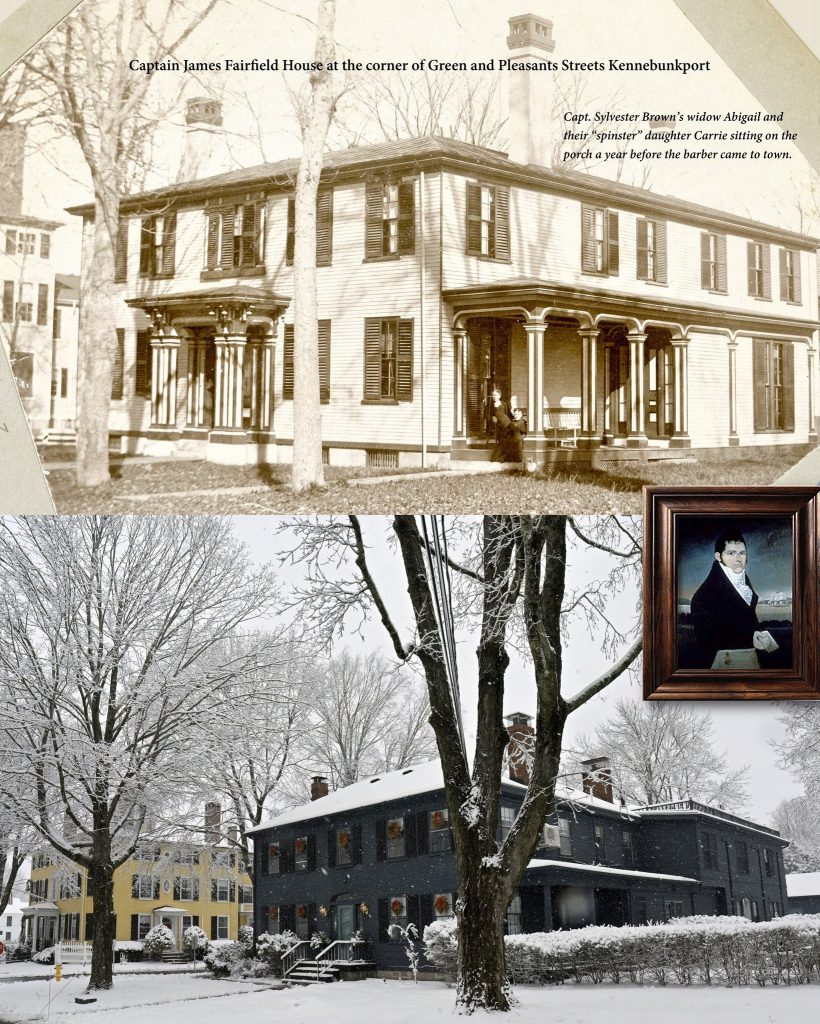Captain James Fairfield House c.1813
Captain James Fairfield married Lois Walker on 12 November 1807. She was the daughter of Daniel Walker of the Cup and Saucer House on Maine Street featured here a couple of weeks ago. You may remember that the couple built The Captain Fairfield house c.1813 on land that Daniel Walker had gifted to his daughter Lois. The Brick Store Museum has a portrait of James Fairfield that, long since being lost at sea in a shipwreck, was delivered to Kennebunkport two years after the Captain’s death. But that’s not the story about the Fairfield House I want to share with you today.
Captain James Fairfield married Lois Walker on 12 November 1807. She was the daughter of Daniel Walker of the Cup and Saucer House on Maine Street featured here a couple of weeks ago. You may remember that the couple built The Captain Fairfield house c.1813 on land that Daniel Walker had gifted to his daughter Lois. The Brick Store Museum has a portrait of James Fairfield that, long since being lost at sea in a shipwreck, was delivered to Kennebunkport two years after the Captain’s death. But that’s not the story about the Fairfield House I want to share with you today.
Constable Lemuel Brooks repeatedly warned Effel to no avail, to “leave town or else”. A most respectable businessmen in town decided something needed to be done as an “example to all immoral people.” A reporter for the Biddeford Weekly Journal was apparently apprised of the plan because he was on the job in Kennebunkport when the dirty deed went down.
Effel Sidelinger was “caught” lurking around Miss Brown’s home that evening, never mind that it was actually his home, too. He was dragged down into the middle of what is today called Ocean Ave. Nearly a hundred of Sidelinger’s neighbors gathered in front of Ham Littlefield’s house to watch the barber get what was coming to him. There, a fire was being stoked. Balanced over it sat a kettle of tar just then reaching the optimal sticky softness necessary to make feathers stick to human flesh. Effel was stripped of all his clothing except for his shirt.
Sidelinger promised to never again give them cause to disapprove of his private life, but the sound of his cries was drowned out by the jeering mob. When Effel saw the men start from the fire with the pail of tar he gave a tremendous jump and got away from the two men holding him, but not before the tar man had a chance to lunge at him, applying hot tar to his shirt.
He ran for his life, across the bridge to Lower Village Kennebunk. It wasn’t until he collapsed at Constable Shuffleberg’s door that he became aware of a serious injury to his knee. Doctors Prescott and Langdon were called to attend to him. They estimated the barber would be unable to walk for at least eight weeks.
Within a few days, Effel filed suit against five prominent Kennebunkport men for instigating the attempted tar & feathering: The Chairman of the Board of Selectmen, a well-known civic-minded artist, a canoe builder, a grocer and a blacksmith. Each time the case was to come before an Alfred Judge, some technicality or other delayed the hearing. Eventually, Carrie and Effel slipped out of town in the middle of the night, they were not pursued. Their departure had been the end game all along.
Ethical, virtuous, honorable; all are generally accepted synonyms for the word moral but when self-appointed moral authority mutates into mob mentality, as it did in Kennebunkport on the night of June 28, 1900, morality gets murky.



Leave a Reply